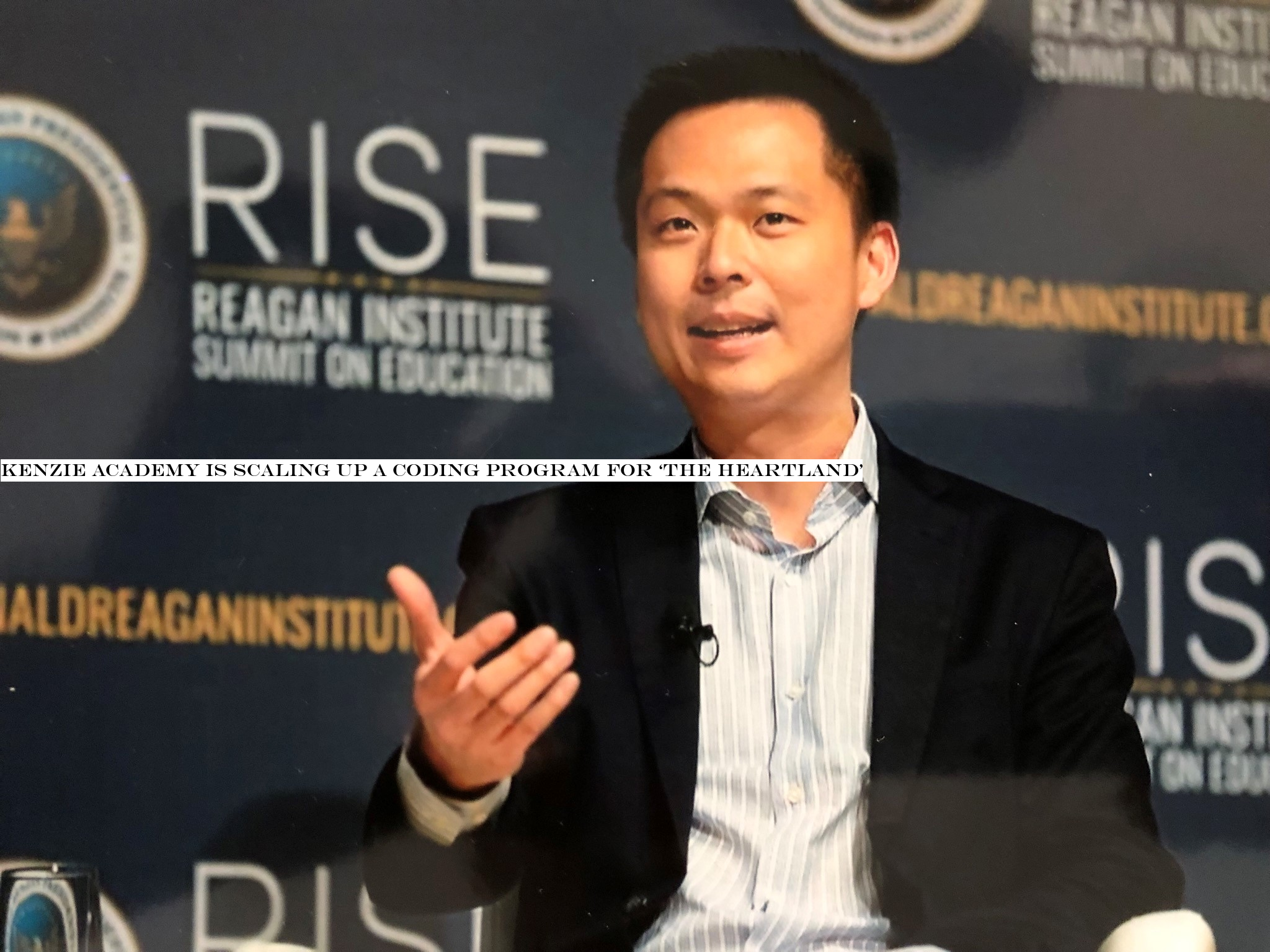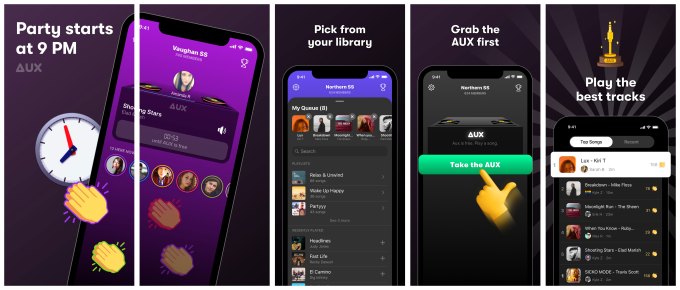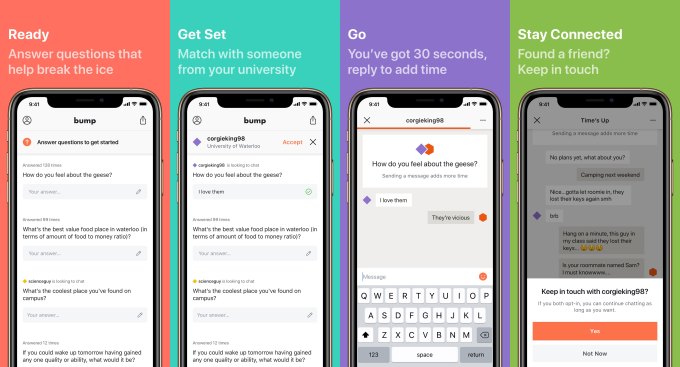Technology
The crowded landscape of programs teaching non-technical people to become software developers has been a proving ground for a new model of education financing: income share agreements (ISAs). With an ISA, students avoid paying tuition upfront or taking out private loans, instead paying a percentage of their income for a time after graduation after they&re earning a minimum income.
The model aligns education providers with students& career outcomes, and one startup is staking a claim to be the leader in the space; Kenzie Academy, a year-long program with a physical campus in Indianapolis — and a student body that66 percent online — announced a partnership with Community Investment Management (CIM) earlier this week that provides $100 million in debt to cover the operating costs associated with students who defer payment through ISAs.
Kenzie co-founder and CEO Chok Ooi says that core to Kenziemission is the goal that its graduates &can stay in the heartland and attract more jobs so that someone coming out of the Midwest no longer has to move to Silicon Valley or New York to have a successful career in tech.& This $100 million is one of the largest commitments yet to financing ISAs and Kenzie is using it to recruit a more diverse population of students who may not be able to afford tuition or qualify for student loans otherwise.
I interviewed Ooi to understand how Kenzie differentiates itself from competitors, how it has iterated its model to improve retention and job placement and how he expects the ISA market to evolve over the next couple years. Herethe transcript of our conversation, edited for length and clarity:
Eric Peckham: The landscape of software developer training programs is crowded. Where did you see an opportunity to do something different, and how do you position Kenzie relative to others in the market?
Chok Ooi: My co-founder came from Galvanize, so we observed firsthand the proliferation of tech and coding boot camps. These are typically short-term, three-to-five month programs and they tend to do well serving people with college degrees. I would say that they are disrupting the masters& program space. We saw a major gap in programs that serve a much larger demographic of people who are much earlier in their development. People who never went to college, or did a little bit of college and dropped out, or just never had a professional work experience. A three-month training is insufficient to get them to a point where they could land a technical job and be successful.
We saw an opportunity to bring high-quality tech education to the American heartland that is 12 months in length. For about two-thirds of our students, this is their first post-secondary credential training.
We are giving them not just the technical skills, but elements from a traditional four-year college as well, like critical thinking, problem-solving and communication skills.
Compared to those other bootcamps or training programs, is Kenzie targeting different job outcomes for its graduates?
We did a survey of our students that asked them to name the top five tech companies they desired to work for. None of the Silicon Valley companies made the list other than Salesforce. Indianapolis is the second largest Salesforce office outside of San Francisco. The rest of the companies our students named were companies like DMI and Zylo that people in Silicon Valley don&t hear about but are doing very well in the Midwest. Their friends work there. They&re a fabric of the community. If we really want to create job opportunities for the rest of America, we cannot adopt the Silicon Valley mindset.

Kenzie Academy co-founder and CEO Chok Ooi.
So how do you evaluate technical aptitude and critical thinking in the admissions process? Whatthat process look like, and how has it evolved over the last couple of years? What have you learned in order to make that more effective?
Prior to founding Kenzie, I started a company nine years ago called AglityIO. The model for AgilityIO was similar to companies like Andela. We were trying to solve the talent crunch in the Bay Area by recruiting and training people with the raw talent in Vietnam. Today, that company works with Google, Uber, NerdWallet, Meetup.com and 150 other tech companies. So I&ve experience in developing processes to identify raw talent in this context.
As people are doing the online assessments, we collect data points of how long it takes for them to solve the problem, what their different decision points are and things like that. Then as they get enrolled in Kenzie, we continue to collect attendance data, grades, and then placement data and use that to look at success and failure cases. We constantly refine our assessment.
Are you seeing any particular pattern or cluster in the applications you&re receiving or the candidates you&re accepting in terms of prior field of employment or aspect of their background?
- Details
- Category: Technology
Read more: Kenzie Academy is scaling up a coding program for ‘the heartland’
Write comment (94 Comments)
We won&t bury the lead on this news, startup fans. We&re giving all you professional procrastinators and time-delayed decision makers an extra week to pull yourselves together and score early-bird savings on passes to Disrupt Berlin 2019(11-12 December).
Early-bird pricing remains in play until 15 November at 11:59 p.m. (CEST). Don&t let this last-chance clock run out. Beat the deadline, buy an early-bird pass to Disrupt Berlin and keep up to €500 in your wallet.
One of the many awesome aspects of Disrupt is the opportunity to learn from a range of experts in the startup community. Here are just three examples of the knowledge you can absorb at Disrupt. Want more? Check out the full event agenda.
Series A financing is a tricky beast and one of the hardest deals to close. If this hot topic speaks to you, don&t miss this panel discussion going down on the Extra Crunch Stage.
What does it take to raise a Series A with Jessica Holzbach (founder, Penta) and Louise Samet (partner, Blossom Capital). Venture capital funds have boomed this decade, but raising money is still hard for young companies. What are investors today looking for in teams, metrics and products?
Climate change is arguably the biggest issue of our time. Learn how one founder turned sustainability into her business.
How to build sustainability as a business with Benjamina Bollag (founder/CEO, Higher Steaks). As climate change and the impacts of a warming world become more important for the consumers who are exposed to it, hear from a developer of lab-grown meat and others on how to build sustainability as a business.
Who wouldn&t love a crystal ball to divine investment trends for the coming year? We have the next best thing — minus the hocus pocus.
Investing in 2020 with Carolina Brochado (investment director, SoftBank Vision Fund) and Tom Hulme (general partner, GV). Nothing changes quite as rapidly as investment trends. Brochado and Hulme will offer perspectives from their experience both on the ground in Europe and from 50,000 feet to talk about what 2020 has in store for startups.
Thereplenty more knowledge and opportunity packed into two short days. Don&t miss theStartup Battlefield pitch competition. Be there as 15-20 stellar startups vie for the Disrupt Cup, investor love, media attention and the $50,000 prize.
Looking for skilled coders to help bring your vision to life? Head to the Extra Crunch Stage and watch the Hackathonfinalists pitch working products they designed and built in 24 pressure-filled hours. Who will win the $5,000 prize for best overall hack?
Disrupt Berlin 2019 takes place on 11-12 December. This is it — one extra week. You have until 15 November at 11:59 (CEST) — an extra week to buy an early-bird pass to Disrupt Berlin. Get ‘er done!
Is your company interested in sponsoring or exhibiting at Disrupt Berlin 2019? Contact our sponsorship sales team byfilling out this form.
- Details
- Category: Technology
Read more: Extension on early-bird sale to Disrupt Berlin 2019
Write comment (99 Comments)This July, Facebook announced a new division called NPE Team which would build experimental consumer-facing apps, allowing the company to try out new ideas and features to see how people would react. It soon thereafter tapped former Vine GM Jason Toff to join the team as a product manager. The first apps to emerge from the NPE Team have now quietly launched. One, Bump, is a chat app that aims to help people make new friends through conversations, not appearances. Another, Aux, is a social music listening app.
Aux seems a bit reminiscent of an older startup, Turntable.fm, that closed its doors in 2013. As in Turntable.fm, the idea with Aux is that of a virtual DJ&ing experience where people instead of algorithms are programming the music. This concept of crowdsourced DJ&ing also caught on in years past with radio stations that put their audiences in control of the playlist through their mobile app.
Later, streaming music apps like Spotify experimented with party playlists, and various startups launched their own guest-controlled playlists.
The NPE TeamAux app is a slightly different take on this general idea of people-powered playlists.
The app is aimed at school-aged kids and teens who join a party in the app every day at 9 PM. They then choose the songs they want to play and compete for the &AUX& to get theirs played first. At the end of the night, a winner is chosen based on how many &claps& are received.

As the app describes it, Aux is a &DJ for Your School& — a title thata bit confusing, as it brings to mind music being played over the schoolintercom system, as opposed to a social app for kids who attend school to use in the evenings.
Aux launched on August 8, 2019 in Canada, and has less than 500 downloads on iOS, according to data from Sensor Tower. Itnot available on Android. It briefly ranked No. 38 among all Music apps on the Canadian App Store on October 22, which may point to some sort of short campaign to juice the downloads.
The other new NPE Team app is Bump, which aims to help people &make new friends.&
Essentially an anonymous chat app, the idea here is that Bump can help people connect by giving them icebreakers to respond to using text. There are no images, videos or links in Bump — just chats.
Based on the App Store screenshots, the app seems to be intended for college students. The screenshots show questions about &the coolest place& on campus and where to find cheap food. A sample chat shown in the screenshots mentions things like classes and roommate troubles.

There could be a dating component to the app, as well, as it stresses that Bump helps people make a connection through &dialog versus appearances.& That levels the playing field a bit, compared with other social apps — and certainly dating apps — where the most attractive users with the best photos tend to receive the most attention.
Chats in Bump take place in real time, and you can only message in one chat at a time. Therealso a time limit of 30 seconds to respond to messages, which keeps the chat active. When the chat ends, the app will ask you if you want to keep in touch with the other person. Only if both people say yes will you be able to chat with them again.
Bump is available on both iOS and Android and is live in Canada and the Philippines. Bump once ranked as high as No. 252 in Social Networking on the Canadian App Store on September 1, 2019, according to Sensor Tower. However, itnot ranking at all right now.
Whatinteresting is that only one of these NPE Team apps, Bump, discloses in its App Store description that the NPE Team is from Facebook. The other, Aux, doesn&t mention this. However, both do point to an App privacy policy thathosted on Facebook.com for those who go digging.
Thatnot too different from how Googlein-house app incubator, Area 120, behaves. Some of its apps aren&t clear about their affiliation with Google, save for a link to Googleprivacy policy. It seems these companies want to see if the apps succeed or fail on their own merit, not because of their parent companybrand name recognition.
Facebook hasn&t said much about its plans for the NPE Team beyond the fact that they will focus on new ways of building community and may be shut down quickly if they&re not useful.
Facebook has been asked for comment about the new apps and we&ll update if one is provided.
- Details
- Category: Technology
The Daily Crunch is TechCrunchroundup of our biggest and most important stories. If you&d like to get this delivered to your inbox every day at around 9am Pacific, you can subscribe here.
1. YouTubehomepage redesign focuses on usability, giving you control over recommendations
The company announced an updated, cleaner design that does away with information density, instead giving more room to the videos and their titles. Other new features include an &Add to Queue& option on the desktop, a desktop version of YouTube stop suggesting feature and more.
The design changes, which started rolling out yesterday, are focused on the desktop and tablet versions of YouTube, not the YouTube mobile website or app.
2. Disney+ will launch in the UK, Germany, Italy, France and Spain in March 2020
Disney has revealed more details about its international streaming plans. Keep in mind, though, that Disney+ won&t be exactly the same in every territory, thanks to rights/licensing deals that may already be in place.
3. How Microsoft is trying to become more innovative
Across the board, the company is trying to find ways to become more innovative, especially around its work in AI. Microsoft is unusually open about this process, too, and actually made it a focus at this weekIgnite conference. (Extra Crunch membership required.)
4. Alibaba to invest $3.3B to bump its stake in logistics unit Cainiao
Alibaba is doubling down on its logistics affiliate Cainiao, two years after acquiring a majority stake in the firm. The Chinese giant said today it would invest an additional 23.3 billion yuan (about $3.33 billion) to raise its equity in Cainiao to 63%.
5. Kepler achieves a world-first for satellite broadband with 100Mbps connection to the Arctic
This is the first time therebeen a high-bandwidth satellite network for any central Arctic ground-based use, Kepler says, and this connection isn&t just a technical demo: itbeing used for the hundreds of researchers in the MOSAiC team.
6. Google hires former Disney and Star executive to head its India business
SanjayGupta previously served as a managing director at Disney India and Disney-owned Star. He&ll be replacing Rajan Anandan, who left the company to join VC fund Sequoia Capital.
7. Sir Martin SorrellSilicon Valley charm offensive
Sir Martin Sorrell has enjoyed huge success, having built the worldbiggest advertising conglomerate, WPP, over 32 years. Healso out for revenge, after he left WPP due to allegations of misconduct.

- Details
- Category: Technology
Read more: Daily Crunch: YouTube redesigns its homepage
Write comment (93 Comments)Official word has come down from federal authorities on one potential cause of the mystery illness affecting vape users: Vitamin E acetate, a chemical found in some vaping products that has been demonstrated to linger in the lungs long afterwards. The finding has been called a &breakthrough& but is far from the last word on the situation.
Sadly, the condition has already claimed the lives of at least 39 people, and more than 2,000 cases have been reported collectively from every state but Alaska. At present the only advice offered has been to stop vaping altogether.
In a media teleconference, the heads of the investigation from the Centers for Disease Control and Prevention explained the basis for pointing the finger at Vitamin E acetate. The substance was cited as a possible problem early on but only recent testing has established it as a bona fide suspect, the team explained.
Samples taken from the lungs of 29 victims of the condition were sent in from 10 different states, and vitamin E acetate was found in all of them. &These findings provide direct evidence of vitamin E acetate as the primary site of injury within the lungs,& said Anne Schuchat, principal deputy director of the CDC .
Although she agreed that this evidence is a &breakthrough,& she noted that it is at present merely a correlative finding — more research is required to establish causation, namely the mechanism of harm, though other work has been done in that area.
&Previous non-CDC research suggests that when vitamin E acetate is inhaled, it may interfere with normal lung function,& she said.
&Itimportant to note that these findings do not rule out other possible compounds or ingredients that may be causing these lung injuries,& she continued. &There may be more than one cause of the outbreak.&
Equally important are the statistics involved with the sources of the substances in question. As mentioned earlier in the investigation, a huge proportion of those suffering from this condition were using THC products, and specifically ones acquired through unregulated channels like street dealers.
The vitamin E acetate may have been added for the purpose of essentially cutting the product, Schuchat mentioned in response to a question on the call.
&That may be done for the illicit purpose, or the profit purpose, of diluting the materials, making it look nice and perhaps not having to use as much THC or other active ingredients,& she said.
Other potentially dangerous chemicals have been identified in vape products when heated and aerosolized, including many that even the creators might not have predicted.
Knowing a potential culprit doesn&t get at the heart of the problem, which would be that this chemical (perhaps among others) has already built up over months or years in the lungs of frequent vape users. Treatment is a parallel line of research, but knowing at least one substance responsible should be helpful.
The CDCprevious advice still stands, the officials noted: They advise avoiding vaping altogether, as there are very few controls at present over which ingredients are allowed in vape products, and what must be declared on the packaging, or indeed whether those declarations are in any way accurate.
- Details
- Category: Technology
As the digital director for Congressman Seth Moulton2020 presidential campaign, I was responsible for everything the campaign did on the internet: the emails you claim to hate, the videos we hoped would go viral, the online infrastructure that supported organizers in the field, and more. But our biggest investment of both time and money, by far, was in digital advertising.
For our campaign and many others, digital ads were the single biggest expense outside of payroll. Yet these ads are terrible for campaigns, toxic for democracy and are even bad for the companies who profit off them. Last week, Twitter CEO Jack Dorsey took a bold first step in banning political ads — Facebook CEO Mark Zuckerberg and Google CEO Sundar Pichai should follow suit.
Digital ads are one of the most important channels for acquiring new supporters and serving them that all-important question: &Will you chip in $10, $5, or whatever you can to support our campaign? Even $1 helps!& When the Democratic National Committee announced in February that presidential candidates would need a minimum of 65,000 individual donors to qualify for the first two debates, acquiring these small dollar donors became a do-or-die priority for campaigns.
The trouble is, when 25 campaigns are competing in a Democratic donor market that had just five competitors in 2016, and when each campaign is desperate to acquire new donors, prices go up. Way up.
We — and I suspect many others — routinely ran what were supposed to be revenue-generating ads at a loss, spending $10, $20, or even $30 in order to acquire one new donor and their contribution of as little as $1. This is a terrible deal for campaigns: they hemorrhage cash in order to lose money acquiring more, costing weeks or months of valuable runway, all while Facebook pockets the difference. At scale, the consequence is massive: the remaining 18 Democratic candidates have already spent over $53 million on Facebook and Google this cycle, most of it these kinds of ads.
This is $53 million — plus millions more from prolific former candidates like Sen. Kirsten Gillibrand and Gov. Jay Inslee — which would have otherwise been invested in infrastructure to turn out voters and help Democrats in November no matter who is the nominee. Instead, it went straight into Facebook and Google coffers.
These ads are toxic to our democracy.
Due to short online attention spans, the character limits that enforce them and the engagement algorithms that act as gatekeepers to the digital world, campaigns must distill complex issues down to a two sentence pseudo-essence that would leave even debate moderators unsatisfied. And if you want to have a prayer of anyone clicking on your ad, it had better be as inflammatory as possible — people click when they&re angry.
The easiest way to do this is to simply make things up, something most campaigns would never consider, but which Zuckerberg made clear in congressional testimony this week his platform would happily enable. Companies like Facebook and Google force us to present voters with a world that is black and white, in which all nuance is distraction, and in which civic engagement is something that can be done from your phone for just $1 (Unless you&d like to make this a monthly recurring donation? Your support has never been more crucial!). This does not an informed, healthy democracy make.
Political ads are not even good for the companies that serve them. On a quarterly earnings call the same day as Dorseyannouncement, Zuckerberg estimated that political ads run by candidates would make up just 0.5% of Facebook2020 revenue. Assuming similar performance to the previous 12 months, in which Facebook earned $66 billion, this would be about $330 million in political ad revenue.
In exchange, Facebook has earned itself years of bad PR, increased regulatory risk as congressional leaders are beginning to see it as a national security problem, and even existential risk as leading presidential candidate Sen. Elizabeth Warren has vowed to break up the company if elected. All over revenues that hardly even justify the opportunity cost of Zuckerberghours of preparation for congressional hearings.
So who benefits from these kinds of ads? Those who want to create a chaotic information environment in the United States in which facts are subjective, reality is ephemeral and the only information you can trust comes from the people manipulating social media to feed it to you. It is therefore no surprise that one of the first organizations to condemn Dorseydecision was the Russian state-sponsored media outlet Russia Today.
Presented with a choice between minuscule revenues and existential risk, between patching a bug in American democracy and abetting Russian propaganda, Dorsey made a wise choice for both his bottom line and his country. Zuckerberg and Pichai would do well to follow his lead.
- Details
- Category: Technology
Read more: I ran digital ads for a presidential campaign, and Twitter is right to ban them
Write comment (90 Comments)Page 404 of 5614

 16
16